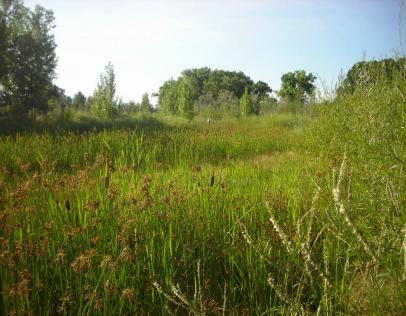CONSERVATION BANKING PROJECTS
Project news
Standley Lake Mitigation Bank
Long before the 2008 Mitigation Rules established clear guidelines, ecos staff negotiated the first private Mitigation Banking Instrument on behalf of the Department of Energy (DOE) for the Rocky Flats clean-up project. The team then went on to design, build, and monitor the project for DOE.
Front Range Umbrella Mitigation Bank
Ecosystem Services, LLC (ecos) has partnered with Restoration Systems, LLC, a national mitigation banking firm out of North Carolina to establish a Conservation Bank (a.k.a., Mitigation Bank) for wetlands, streams and T&E species including the Preble’s meadow jumping mouse. ecos role as Restoration Systems' ecological consultant is to perform optimization analyses, assessment, design, and regulatory negotiation for the first large-scale Umbrella Mitigation Bank for the entire east slope (Front Range) of Colorado. The Front Range Mitigation Bank will ultimately serve all of the major watersheds along the east slope as they develop.
Underlying landowners of Bank properties who are interested in reaping the benefits of conservation and sharing in the profit generated by the sale of Bank credits quite frequently have questions about what the difference is between habitat restoration, enhancement, and creation. These mitigation terms are often intermingled, confused or loosely referred to as ecological restoration. These terms have significantly different meanings, especially when it comes to establishing a legal banking instrument with the USACE and calculating the number of Bank credits that can be sold.
Ecos differentiates these terms using current regulatory definitions to dispel any misuse and provide a platform of understanding among those who provide and receive professional ecological services. To learn the difference, please read on…
After years of development and public comment, the USACE published the 2008 Mitigation Rules which define impact avoidance, minimization and mitigation of aquatic and wetland resources. The USACE differentiates the various forms of mitigation based on the manner in which the physical, chemical, or biological characteristics of aquatic and wetland habitat are manipulated and improved:
- Restoration means returning or repairing natural/historic functions of a former or degraded resource. Restoration is divided into two sub-categories: re- establishment and rehabilitation.
- Re-establishment means returning natural/ historic functions of a former resource. Re-establishment results in rebuilding a former aquatic resource and results in a gain in aquatic resource area and functions.
- Rehabilitation means repairing natural/ historic functions of a degraded resource. Rehabilitation results in a gain in aquatic resource function, but does not result in a gain in aquatic resource area.
- Establishment (or Creation) means to develop a resource that did not previously exist at an upland site. Establishment results in a gain in aquatic resource area and functions.
-
Enhancement means to heighten, intensify, or improve a specific resource function(s). Enhancement results in the gain of selected aquatic resource function(s), but may also lead to a decline in other aquatic resource function(s). Enhancement does not result in a gain in aquatic resource area.
-
Preservation (or Conservation) means the removal of a threat to, or preventing the decline of resources by an action in or near those aquatic resources. This term includes activities commonly associated with the protection and maintenance of resources through the implementation of appropriate legal and physical mechanisms such as conservation easements or the implementation of protective buffers. Preservation does not result in a gain of aquatic resource area or functions.
If you have a site or property in mind where aquatic, wetland or riparian habitat could be restored, enhanced, created, or preserved, or if you need to buy mitigation bank credits to offset authorized impacts, check out our Conservation Banking web page and give us a call. We’d love to talk to you about how Resource Banks enhance the ecological benefits and economic value of your land, complement other land uses, and relieve the burden of permittee-responsible mitigation.








